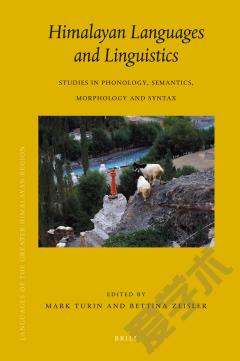Himalayan Languages and Linguistics —— Studies in Phonology, Semantics, Morphology and Syntax
----- 喜马拉雅语言和语言学:音韵学,语义学,形态和语法研究
The work under review is the twelfth volume in the series âLanguages of the Greater Himalayan Regionâ. This series has heretofore comprised reference grammars of Tibeto-Burman languages, typically the outcome of Ph.D dissertations originally submitted to Leiden University. These eleven grammars are of uniform high quality, providing detailed and clearly written linguistic information, while eschewing the maelstroms of faddish currents in theoretical or typological linguistics. Indeed, the researchers associated with the Himalayan Languages Project have arguably contributed more to advancing Tibeto-Burman linguistics than all other working scholars combined. This twelfth volume mostly constitutes papers originally delivered at the 11th Himalayan Languages Symposium, graciously hosted by Krisadawan Hongladarom at Chulalongkorn University in 2005. One of the editors (Mark Turin) and three of the contributors are associated with the Himalayan Languages Project. The volume opens with a paper by George van Driem in which he outlines the contributions of linguistics, archaeology and genetics to the population history of the greater Himalayan region. Most of the genetic data van Driem and his team have compiled remains unpublished; this essay is consequently more exciting for what it presages than what it reveals. I lack some of van Driemâs optimism about the role of genetics in the study of prehistory. Historical linguistics and archaeology offer predetermined populations for investigation, but genetics does not. The Tibeto-Burmans are speakers of Tibeto-Burman languages. The BrÄkhuá¹i culture is characterised by a habitation site and unifacial choppers. But how does one assign ethnicity to a blood sample? The answer in the Peoplesâ Republic of China appears to be to look at the nationality (æ°æ) on someoneâs identity card. Witness Chen et al.âs use of the terms âHan Chineseâ, âTibetan Chineseâ and âMongolian Chineseâ (2006). The reader
{{comment.content}}








 京公网安备 11010802027623号
京公网安备 11010802027623号